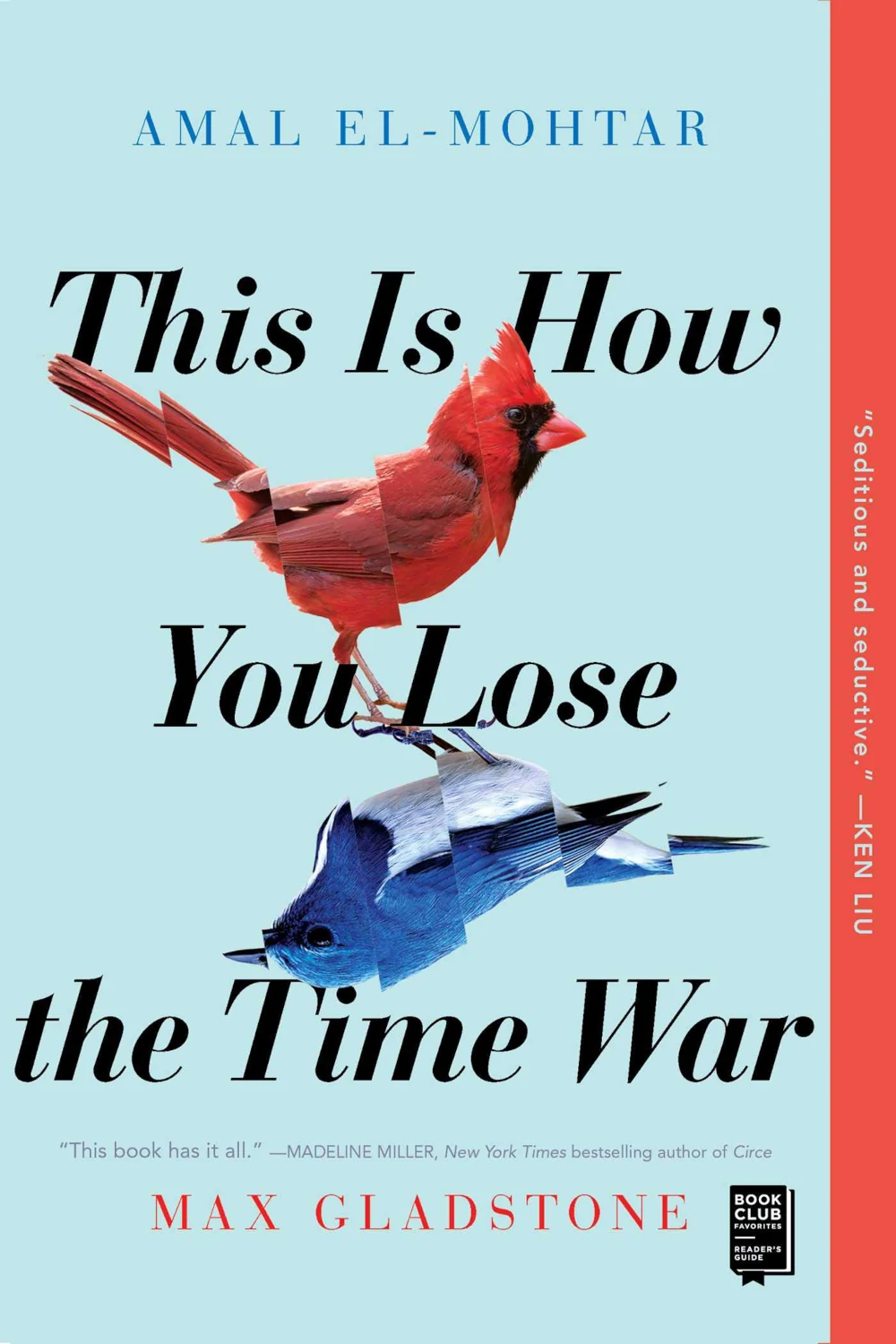
A Review of This is How You Lose the Time War by Amal El-Mohtar and Max Gladstone
Words By Evan Lindeman and Sarah M. Brown
Published March 17, 2020 by Saga Press
Evocative and lush, This Is How You Lose the Time War is a sci-fi novel co-written by authors Amal El-Mohtar and Max Gladstone. It explores the unlikely romance between two time-traveling rivals, Blue and Red, on opposing sides of a faction struggle for dominance of the future. Told through vignettes that span millennia and cultures—and a series of forbidden letters that develop into a daring and intimate love story—the reader finds themselves in the middle of a strange journey back and forth through the braid of time. This is a tale that encapsulates the timeless sentiment of star-crossed lovers: “in any place, in any time, I shall find you and love you and be with you, no matter the odds.”
We follow Red and Blue, operatives of the respective factions Agency and Garden, undoing each other’s work as they travel back and forth through time. Equally-matched foes, they follow and counteract each other, even as they begin to feel the stirrings of companionship and, eventually, love. In the first scene, a fire-scorched battlefield, Red discovers a taunting letter left from their silent, mocking adversary. From there, a precedent of cunning and electric understanding is established. The letter is an invitation, a dare. As much as this book is a romance, it is also a thriller, a bottle of uncorked suspense that’s as dense and unknowable as dark matter.
But it is the letters shared between Red and Blue that are the core of the tale. And they are not just ordinary letters, but poetic, ephemeral masterpieces—what one might expect of powerful spies with the ability to travel across the multiverse. There are messages emblazoned within lava, bones, bee stings, tree rings, and tea leaves that disappear just as soon as they arrive, matching the frenetic pace of Red and Blue’s cat-and-mouse chase. The letters are where the stylistic heart of the novel truly shines; the synergistic combination of Gladstone and El-Mohtar’s writing creates a marvelous repartee.Gladstone, responsible for writing Red’s character, and El-Mohtar for Blue, are masterful writers who develop distinct yet harmonious voices for the two characters throughout the book, which makes the romance between the two all the more dazzling and believable.
Is a certain suspension of disbelief required of a story this grand? Certainly. This Is How You Lose the Time War could, perhaps, smack of the melodramatic, heightening romantic spectacle at the expense of considered plot. The world of Time War comes to life only vaguely, in brief, cryptic snippets that sometimes leave the reader with more questions than answers. There is very little of the concrete to be found here, and those who want to know the reason for the war between Agency and Garden, or even what Red and Blue are, will be left feeling disappointed. More reserved, pragmatic readers may also feel uncomfortable or confused at how quickly such an all-consuming romance grows among sworn foes merely from the exchange of several increasingly amorous letters. One gets the feeling that in a book so brief the authors could have afforded to add a chapter or two to let the romance between Red and Blue mature more organically.
But what might be missing from this equation is the potential necessity of this improbable blossoming of love, this element of “hunger” for connection in an ever-indifferent and in-flux world. A world where an agent may find themselves on missions one day on Strand 9 in the Amazon Basin, the next in Strand 223’s Atlantis, and the next in a Starfleet battle in the far future of Strand 2218. In each other, Blue and Red find entertainment, satisfaction, an anchor and partner within the many-threaded braid of time. Both highly intelligent and with crackling wit, sharpened by immortal existence, they swap highbrow jokes and confess their deepest griefs and longings, even as they begin to grow more and more wary that their days together are numbered. When it all concludes, the ensuing betrayal and defiance and triumph is a thing to behold, and not easily forgotten.
At a deceptively short 50,000 words, This Is How You Lose the Time War packs the same punch that one might expect from a longer-form work, albeit somewhat breathlessly. It leaves the sense that one has not only observed the fruition and consummation of a relationship between two individual people, but a saga of love itself.